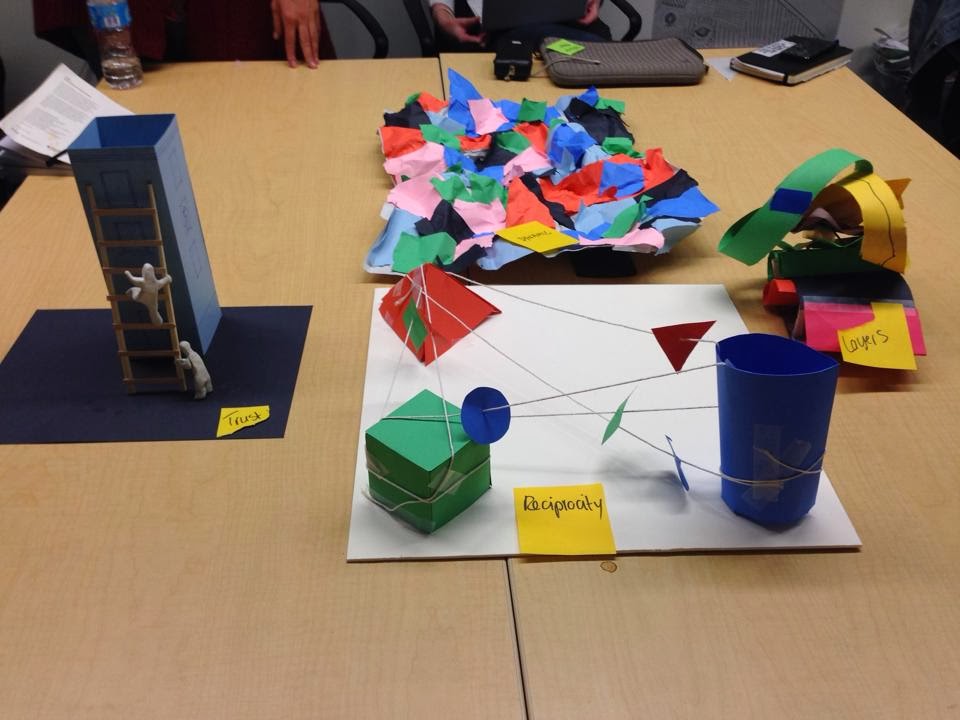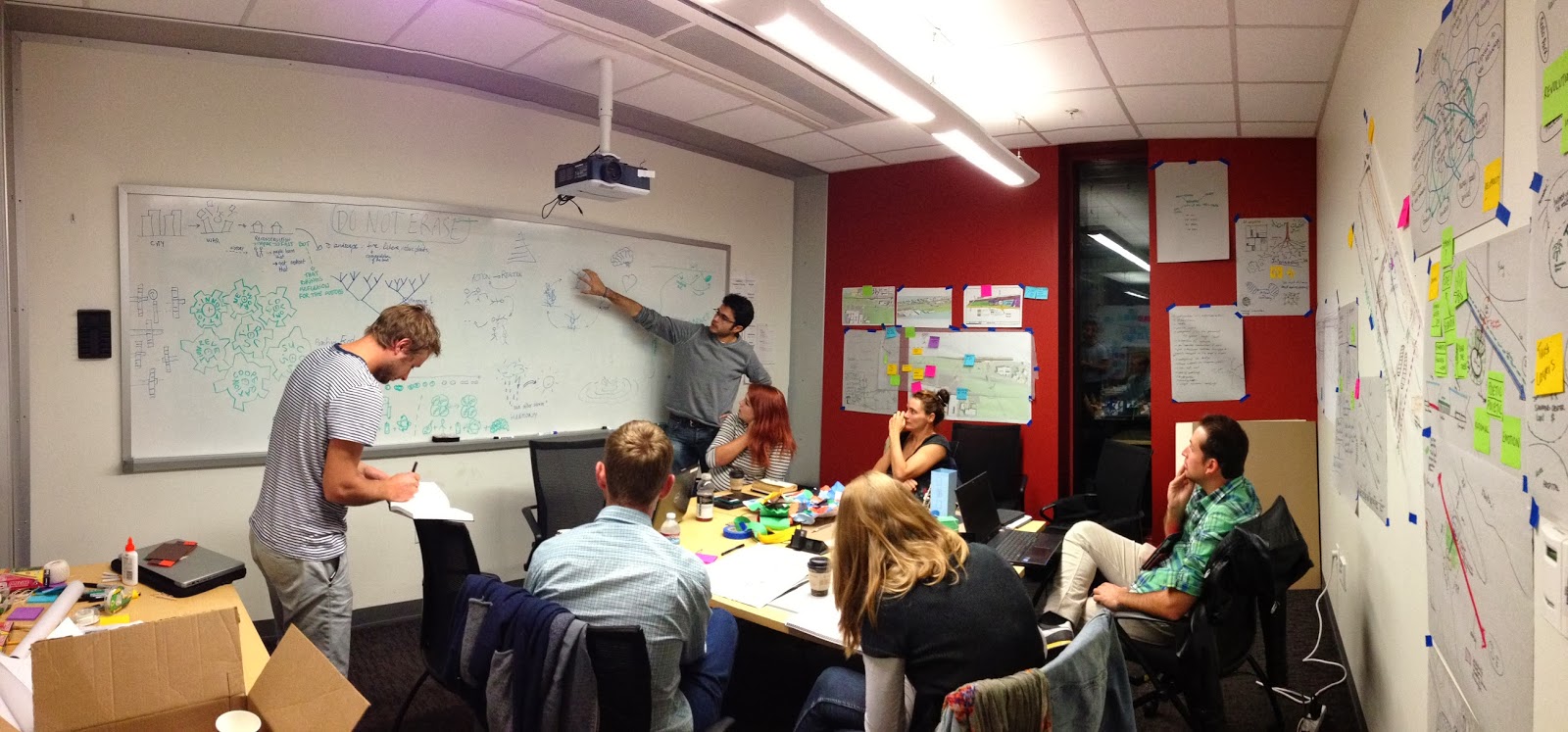 |
| Team Bedouin's paintings |
On Monday, we started to get to know each other. We shared our transdisciplinary and transcultural heroes. Every group member presented their personal hero, and similarities began to emerge. We noted that many of our heroes were empathetic: they were able to put themselves in others' shoes and see things from many points of view. They also defied the boundaries that society, industry, and culture tried to impose on them. Most of them had many areas of expertise, and had several fulfilling careers throughout their lives. This concept of blurred boundaries allowed us to cooperate well in designing and constructing our egg drop structure: The Bungee Egg.
 |
| Team Bedouin hard at work on their winning egg drop design. |
 |
| Our finished product: The Bungee Egg |
 |
| Joris works on a map of the site. |
 |
| Exploring some metaphors... |
The next day, we formulated these abstractions into more applicable models for our site. Some of the concepts we all related to were: symbiosis, reciprocity, trust, dynamic, layers, Möbius, and palimpsest.
 |
| Gretchen explains how reciprocity affects the different players on the site. |
 |
| Clockwise from left: Trust, Dynamic, Layers, and Reciprocity |
 |
| Closeup of our Trust model |
In the end, we came upon the concept of "symbiotic succession". This concept represents our hopes for the site. We want to produce a design that allows all of the different people on the site (commuters, students, residents, businesses, etc.) to work in harmony like an ecosystem. These different players should both give and take, making the site symbiotic. We also want the solution for the site to be a launching pad from which new ideas and solutions can develop.
 |
| Salvador explains the concept of ecological succession. |
 |
| The path we took |

No comments:
Post a Comment